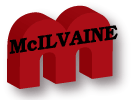
CATER Mask
Decisions
December 8, 2020
Masks
will be Needed to Cope with PM from Road Traffic
Tire Wear
Mask Wearing Should be Coordinated with Ambient
Air Pollution Levels but We Have to Scrutinize
the Definitions
Purar Offers Reusable Mask With Unique Features
Don’t Confuse Medical with
Public Health Guidance
Mask and Filter
Protection are Part of a Swiss Cheese Defense
Program
__________________________________________________________________________
Masks will be Needed to Cope with PM from Road
Traffic Tire Wear
OECD has just issued a report predicting that
wear and tear from brakes, tires and road
surfaces will soon overtake car exhaust fumes as
the leading source of fine particles released
into the air by road traffic, according to a new
OECD report. Heavy electric vehicles with
long-distance batteries could compound the
problem even as they slash emissions from engine
exhaust.
The findings in
Non-exhaust Particulate Emissions from Road
Transport: An ignored Environmental Policy
Challenge
suggest that electric vehicles should not be
exempted from tolls and congestion charges aimed
at reducing road traffic emissions. Instead,
road traffic regulations should consider both
exhaust and “non-exhaust” emissions from all
vehicles and should take into account factors
like vehicle weight and tire composition. Policy
makers should also favor measures that reduce
driving distances, limit urban vehicle access
and encourage public transport, walking and
cycling.
Exposure to airborne particulate matter (PM) is
associated with acute respiratory infections,
lung cancer, and chronic respiratory and
cardiovascular diseases. Road traffic is behind
a quarter of PM2.5, the most damaging type, in
urban areas yet only exhaust emissions of PM are
regulated. No standards exist for measuring or
regulating non-exhaust PM emissions.
As particulate matter emitted from exhaust
sources decreases with the uptake of electric
vehicles, the majority of PM released into the
air by road traffic could come from non-exhaust
sources as early as 2035.
The amount of non-exhaust particulate matter a
vehicle emits is determined by many factors,
including vehicle weight, driving styles, the
material composition of brakes, tires and roads,
and the amount of dust on road surfaces.
Lightweight electric vehicles with a driving
range of about 100 miles (161 km) emit an
estimated 11-13% less PM2.5 than conventional
vehicles in the same segment. However, heavier
electric vehicles with battery packs enabling a
range of 300 miles (483 km) emit an estimated
3-8% more PM2.5 than equivalent conventional
vehicles.
The report finds that the total amount of
non-exhaust particulate matter emitted by
passenger vehicles worldwide is likely to rise
by 53.5% by 2030.
These findings underline the need to establish
standardised approaches to measuring non-exhaust
particulate matter and to develop a better
understanding of how factors like vehicle
characteristics influence the amount of PM
generated, the report says.
Download the
report :
Non-exhaust Particulate Emissions from Road
Transport
Download a
summary of key messages:
Non-exhaust Emissions Highlights
Watch a
discussion with the report’s authors
live at 16:00 CET or on replay
For further information journalists are invited
to contact
Catherine Bremer
in the OECD Media Office (+33 1 45 24 80 97).
Mask Wearing Should be Coordinated with Ambient
Air Pollution Levels but We Have to Scrutinize
the Definitions
The definitions of air pollutant quantities are
based on tradition and are often not the most
accurate selections. Sensor based ambient air
monitors are less costly than analyzers or
permanent samplers but there has been question
about their accuracy. Dubai solved this problem
with a mobile EPA qualified analyzer system and
14 sensor-based systems. China has installed
10,000 Sail Hero sensor-based systems that
correlate closely with analyzers for each of the
major pollutants. The regulations relative to
toxic metals require polluters only to limit PM2.5 which
is used as surrogate for toxic metals. This is
despite the fact that some metals are 100,000
times more toxic than others. This is despite
the fact that the employment of multi metals
analyzers in a St. Louis ambient monitoring
program showed that levels of certain highly
toxic metals varied depending on the wind
direction.
As a St Louis citizen you felt safe not wearing
a mask outside when PM 2.5 levels were low.
However, a lead smelter south west of the City
transmits dangerous levels of lead to the city
when the wind is blowing at certain speeds and
direction. It only takes a tiny fraction of lead
in the PM 2.5 to make inhalation risky.
Opacity is still used for regulatory purposes.
Its origin was long before scrubbers were
employed after the particulate collector. In
most cases scrubbers provide additional
particulate removal but, in some cases, when
they malfunction, they increase particulate
discharges. But believe it or not opacity
regulations require measurement prior to the
scrubber since opacity cannot be measured in a
wet stack.
Power plants and other combustion sources are
required to limit their emissions of gas phase
mercury. This is based on the fact that prior to
attempted control mercury is in the gas
phase. However, when activated carbon is
injected, the mercury becomes attached to
particles. If these particles are not captured,
they can fall in the vicinity of the plant. In
contrast gas phase mercury may travel across
continents. It is therefore possible that
mercury control could result in greater mercury
contamination near the source than if there were
no controls. Permanent samplers will capture
particulate mercury but can be modified to
segment the particulate and gas phase. The
Cooper mercury analyzer also measures total
mercury. Doesn’t it make sense to regulate
total mercury?
The fundamental principles are also murky.
Particulate is defined as the diameter of a
sphere and the particle weight is assumed. In
fact, particles are not spheres and their
specific gravity varies. The cascade impactor is
used to determine particle size. But it creates
its own definition which does not magically
transform hair shaped particles into spheres of
equal gravity.
The McIlvaine Company identified this problem
relative to the sizing of wet high energy
particulate scrubbers based on particle size.
Purchasers who relied on particle size analyses
in many cases experienced disastrous results.
McIlvaine addressed this problem with the
invention of the McIlvaine mini scrubber. It is
a 1 CFM device where the energy in the turbulent
zone can be varied and the results determined in
mg/m3.
The impact of ambient particulate could be
addressed in a similar manner. A miniature lung
equivalent could be used to determine how much
penetrates and how much is captured on the
surface. It is likely that cascade impactor
measured particles of 2.5-micron diameter
penetrate differently. So, the new definition
would be particles which penetrate the lungs vs
those which do not.
EPA standards for ambient measurement of
pollutants have been adopted around the world.
But when China and Dubai use methods which may
be equally indicative even if they don’t
correlate 100% with EPA methods, there is
eventually going to be a movement toward a new
standard.
Toxic metals need to also be addressed. The
concern is not only the particle penetration
aspect but the toxicity. There are now multi
metals analyzers which can measure the
concentration of 17 different metals. So, the
lung penetration index could also be adjusted
based a toxic metal harm quotient. In St. Louis
when winds blow from the south, consistent with
the bearing of the Doe Run Herculaneum lead
smelter the toxic metal harm index is likely to
be much higher than would be reflected by PM2.5 measurement.
McIlvaine has long promoted the use of a toxic
metal harm metric which would consider the
relative contribution of each metal. This would
be of more benefit to St Louis citizens. This
common metric can be expanded to all pollutants
and be a much better guide as to whether to
remain indoors. This is explained at Sustainability
Universal Rating System.
Purar Offers Reusable Mask With Unique Features
Your air, your style, and you. Breathe in
healthy and clean air with Purar, where the
useful is separated from the harmful particles
by providing all with comfortable, highly
functional, and appealing face masks, while
never compromising on personal style.
Having experienced Shanghai China’s long season
of air pollution first hand, Purar’s co-founder,
Jasmine/Xiaohua Meng, found that wearing a mask
was the only way to protect yourself. As a daily
mask user, she experienced the discomfort of
wearing standard surgical facemasks, which make
breathing harder from increased humidity, fogs
up glasses, and can irritate the wearer.
With the question in mind of finding a highly
protective, comfortable, and stylish
alternative, Jasmine delivered the pitch to her
employer, Mann+Hummel, which makes most of its
billions annually from industrial air filter
manufacturing; conventional car filters, to be
specific. Headquartered near Stuttgart, Germany,
Mann+Hummel has been looking for alternative
directions to pivot into, given that the
conventional car market is changing
dramatically. So a few years ago, Mann+Hummel
launched a startup contest called InCube, the
winning idea gets you six months at a startup
incubator, Plug and Play Tech Center, in
California.
Purar emerged as a winning product for the 2019
contest and was formally launched in the Plug
and Play’s Acceleration program in Silicon
Valley, with a global team of developers working
to create a mask that not only works well, but
also feels like a seamless part of our wearers.
Derived from the words “Pure Air”, the facemasks
are engineered by the filtration experts at
Mann+Hummel to achieve the KN95’s filtration
level, giving it the ability to filter more than
95% of the 0.3 micron particles. Besides being
certified for KN95 standards, Purar facemasks
has also passed the leakage test according to
GB2626-2019.
In terms of the design, the reusable facemask
includes a filter that can be replaced and a
sustainable outer shell which is washable. The
washable shell is crafted with an ergonomic
design that is configured carefully with
polygons for fitting comfortably according to
your face shape. An additional feature of the
mask is the neck grip that does not hurt your
ears as much as ear-looped mask. This neck grip
provides more convenience for wearers who use
wire or wireless audio device such as headphone
or AirPods or even female wearers who
accessorize their ears with large chunky
earrings. For those who wear glasses, the mask
comes with a pre-formed nose support that helps
prevent glass-fogging issues.
Each mask is available in 2 sizes (size S and L)
and includes 6 stylish colors: Blue, Black,
Burgundy, Grey, Pink and Mauve. A box of mask
retails at USD49 and comprises of a mask shell,
2 replaceable filters (Protect Plus and Lite
Comfort) and a travel pouch. Protect Plus filter
is tested and certified for standard that
similar to American N95 (GB2626-2019,
certification KN95) to provide full protection.
Whilst Lite Comfort filter provides higher air
permeability than Protect Plus to provide more
comfort and breathability.
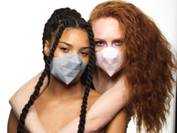
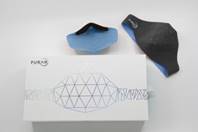


Purar mask is available in 6 stylish colors:
Blue, Black, Burgundy, Grey, Pink and Mauve
Purar does not stop at just offering a highly
fashionable facemask to end-consumers, it goes
beyond this by also offering customizable mask
for B2B corporate needs. After all, Purar’s
mission is to provide people with a comfortable
and fashionable accessory by leveraging the
creativity of young designers to enable them to
breathe cleaner air.
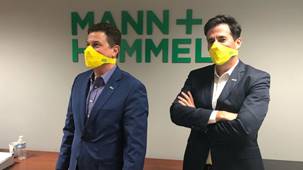
Customizable facemask for corporate needs
Don’t Confuse Medical with
Public Health Guidance
Michael Mina
of Harvard says it is important to distinguish medical from public
health guidance. This is good
advice. In fact it is important to also
distinguish guidance for vaccine manufacture.
It is also desirable to distinguish between sub
segments. The guidance for personnel entering an
isolation unit are far different than for a
person at the registration desk in a hospital.
|
Application |
Filtration Efficiency % |
|
Medical |
|
|
Registration |
90 |
|
Non infectious |
95 |
|
Infectious |
99.99 |
|
Pharmacy |
99.99 |
|
Vaccine Mfg. |
|
|
Fill and finish |
99.999 |
|
Adjacencies |
99.9 |
|
Public High Positivity Zone |
|
|
Open Parks |
60 |
|
City Streets |
90 |
|
Elevators |
95 |
|
Subways |
99 |
The efficiency needs can be achieved with a
combination of filters and masks. If there are
filter cubes on the city streets at
intersections the need for more efficient masks
is less. If the elevator has a HEPA filter and
laminar air flow there is less of a burden on
the mask. This combination of filters can be
conceived as the swiss cheese defense program as
explained below.
Mask and Filter Protection
are Part of a Swiss Cheese Defense Program
This concept was the basis of an article by Siobhan
Roberts
published Dec. 5, 2020
in the NY Times.
Lately, in the ongoing
conversation about how to defeat the coronavirus,
experts have made reference to the “Swiss cheese
model” of pandemic defense.
The metaphor is easy enough
to grasp: Multiple layers of protection,
imagined as cheese slices, block the spread of
the new coronavirus, SARS-CoV-2, the virus that
causes Covid-19. No one layer is perfect; each
has holes, and when the holes align, the risk of
infection increases. But several layers combined
— social distancing, plus masks, plus
hand-washing, plus testing and tracing, plus
ventilation, plus government messaging —
significantly reduce the overall risk.
Vaccination will add one more protective layer.
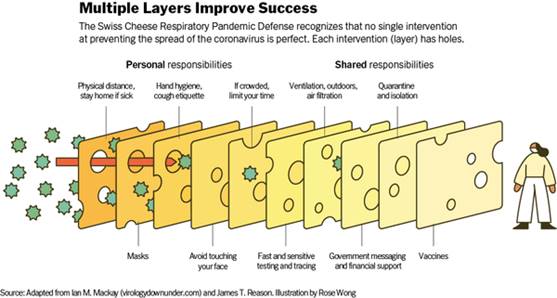
“Pretty soon you’ve created an impenetrable
barrier, and you really can quench the
transmission of the virus,” said Dr. Julie
Gerberding, executive vice president and chief
patient officer at Merck, who recently
referenced the Swiss cheese model when speaking
at a virtual gala fund-raiser for MoMath, the
National Museum of Mathematics in Manhattan.
“But it requires all of those things, not just
one of those things,” she added. “I think that’s
what our population is having trouble getting
their head around. We want to believe that there
is going to come this magic day when suddenly
300 million doses of vaccine will be available
and we can go back to work and things will
return to normal. That is absolutely not going
to happen fast.”
Rather, Dr. Gerberding said in a follow-up
email, expect to see “a gradual improvement in
protection, first among the highest need groups,
and then more gradually among the rest of us.”
Until vaccines are widely available and taken,
she said, “we will need to continue masks and
other common-sense measures to protect ourselves
and others.”
In October, Bill Hanage, an epidemiologist at
the Harvard T.H. Chan School of Public Health,
retweeted an infographic rendering
of the Swiss cheese model, noting that it
included “things
that are personal *and* collective
responsibility — note the ‘misinformation mouse’
busy eating new holes for the virus to pass
through.”
“One of
the first principles of pandemic response is, or
ought to be, clear and consistent messaging from
trusted sources,” Dr. Hanage said in an email.
“Unfortunately the independence of established
authorities like the C.D.C. has been called into
question, and trust needs to be rebuilt as a
matter of urgency.” A catchy infographic is a
powerful message, he said, but ultimately
requires higher-level support.
The Swiss cheese concept originated with James
T. Reason, a cognitive psychologist, now a
professor emeritus at the University of
Manchester, England, in his 1990 book, “Human
Error.”
A succession of disasters including
the Challenger shuttle explosion, Bhopal and
Chernobyl — motivated the concept, and it became
known as the “Swiss cheese model of accidents,”
with the holes in the cheese slices
representing errors that
accumulate and lead to adverse events.
The model has been widely used by safety
analysts in various industries, including
medicine and aviation, for many years. (Dr.
Reason did not devise the “Swiss cheese” label;
that is attributed to Rob Lee, an Australian
air-safety expert, in the 1990s.) The model
became famous, but it was not accepted
uncritically; Dr. Reason himself noted that it
had limitations and was intended as a generic
tool or guide. In 2004, at a workshop addressing
an aviation accident two years earlier near
Überlingen, Germany, he delivered a talk with
the title, “Überlingen: Is Swiss cheese past
its sell-by date?”
In 2006, a review of the model, published by
the Eurocontrol
Experimental Center, recounted that Dr.
Reason, while writing the book chapter “Latent
errors and system disasters,” in which an early
version of the model appears, was guided by two
notions: “the biological or medical metaphor of
pathogens, and the central role played by
defenses, barriers, controls and safeguards
(analogous to the body’s autoimmune system).”
The cheese metaphor now pairs fairly well with
the coronavirus pandemic. Ian M. Mackay, a
virologist at the University of Queensland, in
Brisbane, Australia, saw a smaller version on Twitter,
but thought that it could do with more slices,
more information. He created, with
collaborators, the “Swiss
Cheese Respiratory Pandemic Defense” and
engaged his Twitter community, asking for
feedback and putting the visualization through
many iterations. “Community engagement is very
high!” he said. Now circulating widely, the
infographic has been translated into
more than two dozen languages.
“This multilayered approach
to reducing risk is used in many industries,
especially those where failure could be
catastrophic,” Dr. Mackay said, via email.
“Death is catastrophic to families, and for
loved ones, so I thought Professor Reason’s
approach fit in very well during the circulation
of a brand-new, occasionally hidden, sometimes
severe and occasionally deadly respiratory
virus.”
The following is an edited version of a recent
email conversation with Dr. Mackay by the
Washington Post.
Q. What does the Swiss cheese model show?
A. The real power of this infographic — and
James Reason’s approach to account for human
fallibility — is that it’s not really about any
single layer of protection or the order of them,
but about the additive success of using multiple
layers, or cheese slices. Each slice has holes
or failings, and those holes can change in
number and size and location, depending on how
we behave in response to each intervention.
Take masks as one example of a layer. Any mask
will reduce the risk that you will unknowingly
infect those around you, or that you will inhale
enough virus to become infected. But it will be
less effective at protecting you and others if
it doesn’t fit well, if you wear it below your
nose, if it’s only a single piece of cloth, if
the cloth is a loose weave, if it has an
unfiltered valve, if you don’t dispose of it
properly, if you don’t wash it, or if you don’t
sanitize your hands after you touch it. Each of
these are examples of a hole. And that’s in just
one layer.
To be as safe as possible, and to keep those
around you safe, it’s important to use more
slices to prevent those volatile holes from
aligning and letting virus through.
Q. What have we learned since March?
A. Distance is the most effective intervention;
the virus doesn’t have legs, so if you are
physically distant from people, you avoid direct
contact and droplets. Then you have to consider
inside spaces, which are especially in play
during winter or in hotter countries during
summer: the bus, the gym, the office, the bar or
the restaurant. That’s because we know
SARS-CoV-2 can remain infectious in aerosols
(small floaty droplets) and we know that aerosol
spread explains Covid-19 superspreading events.
Try not to be in those spaces with others, but
if you have to be, minimize your time there
(work from home if you can) and wear a mask.
Don’t go grocery shopping as often. Hold off on
going out, parties, gatherings. You can do these
things later.
Q. Where does the “misinformation mouse” fit in?
A. The misinformation mouse can erode any of
those layers. People who are uncertain about an
intervention may be swayed by a loud and
confident-sounding voice proclaiming that a
particular layer is ineffective. Usually, that
voice is not an expert on the subject at all.
When you look to the experts — usually to your
local public health authorities or the World
Health Organization — you’ll find reliable
information.
An effect doesn’t have to be perfect to reduce
your risk and the risk to those around you. We
need to remember that we’re all part of a
society, and if we each do our part, we can keep
each other safer, which pays off for us as well.
Another example: We look both ways for oncoming
traffic before crossing a road. This reduces our
risk of being hit by a car but doesn’t reduce it
to zero. A speeding car could still come out of
nowhere. But if we also cross with the lights,
and keep looking as we walk, and don’t stare at
our phone, we drastically reduce our risk of
being hit.
We’re already used to doing that. When we listen
to the loud nonexperts who have no experience in
protecting our health and safety, we are
inviting them to have an impact in our lives.
That’s not a risk we should take. We just need
to get used to these new risk-reduction steps
for today’s new risk — a respiratory virus
pandemic, instead of a car.
Q. What is our individual responsibility?
A. We each need to do our part: stay apart from
others, wear a mask when we can’t, think about
our surroundings, for example. But we can also
expect our leadership to be working to create
the circumstances for us to be safe — like
regulations about the air exchange inside public
spaces, creating quarantine and isolation
premises, communicating specifically with us
(not just at us), limiting border travel,
pushing us to keep getting our health checks,
and providing mental health or financial support
for those who suffer or can’t get paid while in
a lockdown.
Q. How can we make the model stick?
A. We each use these approaches in everyday
life. But for the pandemic, this all feels new
and like a lot of extra work. Because everything
is new. In the end, though, we’re just forming
new habits. Like navigating our latest phone’s
operating system or learning how to play that
new console game I got for my birthday. It might
take some time to get across it all, but it’s
worthwhile. In working together to reduce the
risk of infection, we can save lives and improve
health.
And as a bonus, the multilayered risk reduction
approach can even decrease the number of times
we get the flu or a bad chest cold. Also,
sometimes slices sit under a mandate — it’s
important we also abide by those rules and do
what the experts think we should. They’re
looking out for our health.
https://www.nytimes.com/2020/12/05/health/coronavirus-swiss-cheese-infection-mackay.html
